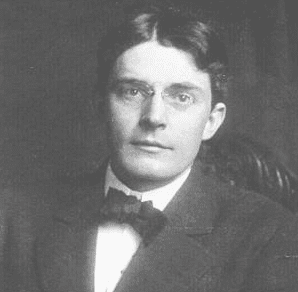Little Albert: The Lost Boy of Psychology

The Little Albert Experiment is one of the most confusing and controversial stories in the history of psychology. It was conducted by John B. Watson, who many people consider the father of the behaviorism. In general terms, he proposed that we can mold human behavior according to stimuli and responses.
What behaviorism points out, in essence, is that we can shape or “train” human behavior. Unlike other schools of thought, behaviorists believe that the happiness of an elderly person in China is exactly the same as that of a baby from Mexico. It doesn’t matter what happens internally because observable behavior is what counts.
To test his basic hypothesis, John Watson decided to conduct a series of experiments. The most famous of them was that of little Albert, a 9-month-old baby. After Watson’s tests, he was never to know what became of the little child. However, some researchers decided to find out what had happened to him, and the results were very surprising.

The Little Albert Experiment
Before mentioning what happened with “Albert” and Watson, let’s briefly remember what the little Albert experiment consisted of. According to what Watson said in his notes, the boy was the son of an orphanage’s nurse. He was chosen for the experiment due to his calm and somewhat indifferent character and response to external stimuli.
What Watson did was expose the baby to different stimuli. A monkey, a white rat, burning paper, etc. When the child was shown each of these things, he was attentive, but basically emotionally indifferent towards them. He only expressed a certain curiosity.
Later on, Watson introduced an additional stimulus. Each time the white rat appeared, he clanged an iron rod to produce a thunderous noise that frightened the baby. Thus, the boy began to associate the sound with the rat, and, after a while, he was afraid when he saw the animal. Then, the baby started to fear rabbits and other small animals.
What happened to little Albert?
Little Albert’s experiment allowed Watson to prove that we can mold behavior through stimuli. In his notes, he said that he stopped experimenting because the boy had been adopted. However, it was never clear whether the fear remained in him or not after the experiment.
Over time, some researchers became interested in finding out what had become of little Albert. One of those interested in finding out the truth was psychologist Hall Beck. Using Watson’s notes and other documents, he found the boy. In 2009, he published his conclusions.
In them, he pointed out that Albert was actually Douglas Merritte, a child who had suffered from hydrocephalus since his birth and died at the age of six. His findings called into question all of Watson’s work and also turned his experiment into something even more unpleasant, as he used a disabled child to prove his theory.

Another hypothesis and more questions
Another psychologist, Russell A. Powell, of Grand McEwan University in Canada questioned Beck’s conclusions. He also started his own research and, in 2012, published his conclusions. According to him, little Albert was actually William Albert Barger, a normal child who lived a healthy life and died at the age of 88. He also disliked animals.
Both Beck’s and Powell’s hypotheses are very solid, but not conclusive. To try and reach some sort of conclusion, in June 2014, researcher Tom Bartlett published a new article in which he concluded that both children had participated in the experiment.
The whole issue is really a debate about the validity of behaviorism, a school of thought that has been heavily criticized for its reductionism. To this, we can add a certain dislike for John Watson himself. This man was criticized for having divorced his wife after having an affair with Rosalie Rayner, a student who had served as his assistant.
John Watson was expelled from the school of behaviorism, and they withdrew his academic degrees. He had two children with Rayner, who they educated in a strictly behaviorist way. Both children tried to commit suicide when they were adults, and the eldest, William, succeeded.
In the 50s, all of Watson’s academic qualifications were restored, by which time he had already focused his interest on another area: advertising.
All cited sources were thoroughly reviewed by our team to ensure their quality, reliability, currency, and validity. The bibliography of this article was considered reliable and of academic or scientific accuracy.
- Pérez-Delgado, E., Gil, F. T., & Garrido, A. P. (1991). La nueva imagen de John Broadus Watson en la historiografía contemporánea. Anuario de psicología/The UB Journal of psychology, (51), 67-88.
This text is provided for informational purposes only and does not replace consultation with a professional. If in doubt, consult your specialist.








